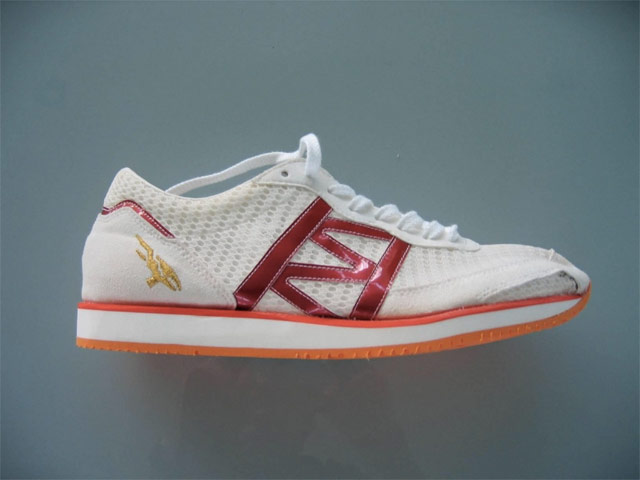The shoe master

That is a bespoke running shoe made by a small company started by Hitoshi Mimura, who is considered one of the top shoe designers in the world. Mimura had great success at Asics, outfitting Olympic gold medal runners with shoes lighter, grippier, and more breathable than those worn by competitors, but now he has struck out on his own.
“I take 13 measurements of the foot, each foot has to be measured separately,” explains the sensei of shoemaking. “I only trust hand-measuring. Currently, each shoe takes about three weeks to make, mainly due to determining which materials to use.” Preparation is also key. “For a world championships or Olympics I check the course once or twice. I went to Beijing three times.”
A NY Times feature on Mimura written before the 2008 Olympic Games in Beijing emphasized the designer’s reliance on rice husks in the soles for grippiness. Mimura takes his job and his responsibility to the runners very seriously:
Surreptitiously, Mimura made soles of two slightly different thicknesses, to compensate for the fact that Takahashi’s left leg was eight millimeters — about a third of an inch — longer than her right leg. She had tried a pair of the uneven soles before the Sydney Olympics, but felt uncomfortable.
Still, Mimura felt Takahashi needed such shoes to win and to avoid a recurrence of pain caused by the disparity in her legs. Without Takahashi’s knowledge, Mimura gave her the uneven soles, then wrote a letter of resignation, in case she failed to win gold.
“I decided to take full responsibility because I made this pair against her wishes,” Mimura said of the letter. “I didn’t have to hand it over. It’s still in my desk.”
That is belief in yourself and in your craft. Many people believe in “giving people not what they want but what they need” but how many of them will put their livelihood on the line for it?





Stay Connected